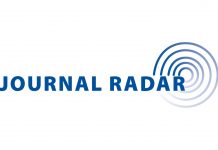Based on global ALEX, has crizotinib been relegated to the therapeutic scrapheap when it comes to patients with ALK rearrangements?
Or does it retain some role? The global ALEX study, presented at ASCO 2017 and published simultaneously in the NEJM, compared alectinib head-to-head with crizotinib in previously untreated, advanced ALK-positive NSCLC. The study met its primary endpoint and showed that alectinib led to significant prolongation in progression-free survival (PFS) compared with crizotinib (HR= 0.47). In addition, alectinib demonstrated greater CNS activity than crizotinib, and significantly delayed time to CNS progression. Given the positive results, particularly regarding CNS disease, alectinib has become the new standard of care for newly diagnosed patients with advanced ALK-positive NSCLC. While crizotinib may soon be replaced as the preferred first-line agent for ALK-positive NSCLC, crizotinib could still have a role in later lines of therapy. For example, patients who fail on alectinib due to MET amplification may be responsive to crizotinib, which is a multitargeted ALK/ROS1/ MET inhibitor. A second example may be the use of crizotinib in patients who have relapsed due to a specific ALK resistance mutation—ALK L1198F— which we previously showed can resensitize resistant patients to crizotinib. As we continue to study resistance to ALK-targeted therapies, additional roles for crizotinib could be identified.
Given the results observed in global ALEX, is there a viable role for ceritinib?
Ceritinib is another second-generation ALK inhibitor that has been extensively studied in the crizotinib-resistant setting, and has also now been studied in the treatment-naïve setting. In ASCEND-4 published by Soria and colleagues in Lancet earlier this year, ceritinib was shown to be superior to platinum/pemetrexed chemotherapy as first-line therapy for advanced ALK-positive NSCLC. Of note, the comparator was chemotherapy rather than crizotinib; however, based on the positive results, it is likely that ceritinib is also superior to crizotinib. While ceritinib and alectinib have not been directly compared in a randomized trial, crosstrial comparisons suggest that alectinib is likely superior to ceritinib. In ASCEND- 4, the median PFS with first-line ceritinib was 16.6 months, while in global ALEX, the median PFS with first-line alectinib (based on independent review) was 25.7 months. In addition, alectinib is CNS penetrable and highly CNS active. This has been demonstrated not only in the treatment-naïve setting, but also in the post-crizotinib and post-ceritinib settings. Finally, in terms of safety, alectinib has been associated with only mild side effects, while ceritinib can cause significant gastrointestinal toxicity including transaminitis. Thus, both the efficacy and safety data now available support the use of alectinib over ceritinib as firstline therapy. As with crizotinib, there may still be a role for ceritinib in later lines of therapy. As an example, one of the most common alectinib-resistance mutations–ALK I1171X–is sensitive to ceritinib in preclinical studies and clinical case reports.
How often should patients with ALK translocations be screened for CNS metastases?
For patients with ALK-positive tumors with no known brain metastases who are receiving treatment with crizotinib, I typically recommend surveillance brain MRIs every 3 to 6 months (sooner if new symptoms occur). Crizotinib is known to be poorly CNS penetrable, and a significant proportion of ALK-positive patients treated with crizotinib will develop CNS metastases. In the global ALEX study, we showed that in crizotinib-treated patients, the cumulative incidence rate of CNS progression was 41% at 12 months, highlighting the need for frequent CNS surveillance. For patients without brain metastases treated with ceritinib, I would recommend a similar frequency of brain imaging. Alectinib is highly CNS penetrant and has been shown in multiple studies to be very effective in treating and preventing CNS metastases. Nevertheless, patients treated with alectinib can still develop progressive CNS disease. Thus, I also recommend surveillance brain MRIs in patients receiving alectinib, on the order of every 6 to 12 months. The optimal frequency of surveillance brain scans in patients without known CNS disease remains to be determined. However, in the global ALEX study, the cumulative incidence rate of CNS progression at 12 months was 9% in the alectinib arm.
How do you manage myalgias and muscle cramps that occur with alectinib?
Muscle symptoms—pain, tenderness, weakness—are commonly seen with initiation of alectinib. These symptoms tend to peak during the first 1 to 2 months, and then usually subside. Often, but not always, these symptoms are associated with elevation in creatinine phosphokinase (CPK). Many patients describe feeling as if they had an intense workout. For mild muscle symptoms, patients may take an occasional over-the- counter pain reliever such as acetaminophen or ibuprofen. For moderate to severe muscle symptoms, patients may require a dose interruption and possibly dose reduction. Most patients will notice that these muscle symptoms resolve rapidly with dose hold, and they often can tolerate a lower dose of alectinib well. Over the years, I have had a handful of patients with severe muscle symptoms, ultimately requiring permanent discontinuation, but these cases are rare.
What do we do therapeutically once patients develop resistance to alectinib?
Patients who develop resistance to alectinib have a number of therapeutic options. I strongly recommend rebiopsy of a resistant site, as we have recently shown that in about one-half of alectinibresistant cases, the cancer has become resistant due to a secondary mutation within the ALK kinase domain. The presence of an ALK mutation suggests that the cancer may still be ALK dependent and hence responsive to further ALK inhibition. In preclinical and early clinical studies, we have shown that resistant cancers harboring an ALK kinase mutation are responsive to the pan-inhibitory, third-generation ALK inhibitor lorlatinib. Depending on the exact ALK resistance mutation, the cancer may also respond to other ALK inhibitors, including ceritinib and brigatinib. In addition to ALK-targeted therapies, patients whose disease progresses on alectinib are also candidates for standard therapy (such as pemetrexedbased chemotherapy) and clinical trials (with experimental ALK inhibitors or emerging combination therapies).
Are we at a point where we can match “resistance mutations” with appropriate TKI?
Or is this still a “pipedream?” Unlike EGFR mutant NSCLC, in ALKpositive NSCLC, a multitude of different ALK resistance mutations have been discovered in patients relapsing on first- and next-generation ALK inhibitors. Preclinical studies with cell line models harboring different ALK resistance mutations suggest that different ALK inhibitors have differential activity depending on the exact resistance mutation. This has led to the idea of personalizing or matching ALK inhibitors based on the underlying ALK resistance mutation. This idea has become increasingly important with the widespread use of second-generation ALK inhibitors post crizotinib. As an example of the potential clinical relevance of matching drugs with mutations, in patients who have failed sequential crizotinib followed by a second generation ALK inhibitor, rebiopsies have shown that about a quarter of cases have acquired an ALK G1202R resistance mutation. This mutation confers resistance to both first- and second-generation ALK inhibitors, so just switching the patient to a different second-generation ALK inhibitor is unlikely to be effective. However, lorlatinib does have clinical activity against this particular mutation, so ideally patients harboring ALK G1202R should be directed to this drug (currently available through an expanded access program in the US). To prospectively examine the utility and feasibility of personalizing ALK therapies, the National Cancer Institute, in collaboration with the NRG cooperative group, will be launching the ALK Master Protocol in early 2018. This protocol will focus on ALK-positive NSCLC patients whose disease has progressed on a next-generation ALK inhibitor, and will use ALK mutation status (as determined by tumor and liquid biopsies) to match patients to the appropriate ALK inhibitor(s).











